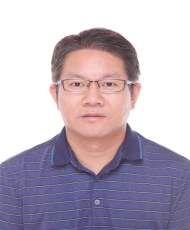
|
I. Personal information
Title: Professor
Highest academic degree: Ph.D
E-mail: szl30@ujs.edu.cn
II. Academic background
Professor, Doctoral Supervisor, International Genome Center, Jiangsu University, 2018-Present
Visiting Scholar, Western University, Canada, Lawson Institute, 2009/01–2010/01
Professor, Department of Immunology, Jiangsu University, 2017-2018
Associate Professor, Department of Immunology, Jiangsu University, 2013-2017
Lecturer, Department of Immunology, Jiangsu University, 2008-2013
III. Research fields
Cardiac injury and functional remodeling, autoimmune disease, cancer immune
IV. Key scientific research projects
Prof. Zhaoliang Su headed/heading more than 10 natural science foundation projects. Key scientific research projects in recent years are as follows:
1.ANG II/AT1T modulated CD11b+Ly6Chi monocyte and involved in EAM development. Agency: National Natural Science Foundation of China (Grant No. 81671567), Period: Jan 1, 2017-Dec 31, 2020
2.reHMGB1 induces IL-22 producing NKp46+ILC3 expansion and regulates cardiac fiborsis of EAM mice. Agency: National Natural Science Foundation of China (Grant No. 81871244), Period: Jan 1, 2019-Dec 31, 2022,
3.HMGB1 promoted macrophage polarization and involved in Th17 cells mediated-EAM development. Agency: National Natural Science Foundation of China (Grant No. 81370084), Period: 2014-2017.
4.HMGB1 promoted Th17 cells expansion and involved in EAM. Agency: National Natural Science Foundation of China (Grant No. 81001319), Period: 2010-2013.
V. Main achievements
Prof. Zhaoliang Su has published more than 80 significant scientific papers, and the main papers in recent years are as follows:
1.Lu H, Zhang Z, Barnie PA, Su Z. Dual faced HMGB1 plays multiple roles in cardiomyocyte senescence and cardiac inflammatory injury. Cytokine Growth Factor Rev. 2019;47:74-82 (corresponding author)
2.Lu H, Wu Y, Shao X, Zhou S, Jiang Y, Chen R, Zong G, Xu H, Su Z. ANG II facilitated CD11+Ly6Chi cells reprogramming into M1-like macrophage through Erk1/2 or p38-Stat3 pathway and involved in EAM. J Leukoc Biol. 2018; 103(4):719-730 (corresponding author)
3.Su Z, Sun C, Zhou C, Liu Y, Zhu H, Sandoghchian S, Zheng D, Peng T, Zhang Y, Jiao Z, Wang S, Xu H. HMGB1 blockade attenuates experimental autoimmune myocarditis and suppresses Th17-cell expansion. Eur J Immunol. 2011;41(12): 3586-95.
4.Chen R, Cao Y, Tian Y, Gu Y, Lu H, Zhang S, Xu H, Su Z. PGE2 ameliorated viral myocarditis development and promoted IL-10-producing regulatory B cell expansion via MAPKs/AKT-AP1 axis or AhR signaling. Cell Immunol. 2020;347:104025. (corresponding author)
5.Su Z, Yin J, Wang T, Sun Y, Ni P, Ma R, Zhu H, Zheng D, Shen H, Xu W, Xu H. Up-regulated HMGB1 in EAM directly led to collagen deposition by a PKCbeta/Erk1/2-dependent pathway: cardiac fibroblast/myofibroblast might be another source of HMGB1. J Cell Mol Med. 2014;18(9):1740-51.
6.Su Z, Lu H, Jiang H, Zhu H, Li Z, Zhang P, Ni P, Shen H, Xu W, Xu H. IFN-γ-producing Th17 cells bias by HMGB1-T-bet/RUNX3 axis might contribute to progression of coronary artery atherosclerosis. Atherosclerosis. 2015;243 (2):421-8.
7.Zheng D#, Su Z#, Zhang Y, Ni R, Fan GC, Robbins J, Song LS, Li J, Peng T. Calpain-2 promotes MKP-1 expression protecting cardiomyocytes in both in vitro and in vivo mouse models of doxorubicin-induced cardiotoxicity. Arch Toxicol. 2019;93(4):1051-1065.
8.Liu Y, Zhu H, Su Z, Sun C, Yin J, Yuan H, Sandoghchian S, Jiao Z, Wang S, Xu H. IL-17 contributes to cardiac fibrosis following experimental autoimmune myocarditis by a PKC/Erk1/2/NF-B-dependent signaling pathway. Int Immunol. 2012,24(10):605-612 (corresponding author)
9.Jiang Y, Chen R, Shao X, Ji X, Lu H, Zhou S, Zong G, Xu H, Su Z. HMGB1 silencing in macrophages prevented their functional skewing and ameliorated EAM development: Nuclear HMGB1 may be a checkpoint molecule of macrophage reprogramming. Int Immunopharmacol. 2018;56:277-284. (corresponding author)
10.Zhao Y, Shao Q, Zhu H, Xu H, Long W, Yu B, Zhou L, Xu H, Wu Y, Su Z. Resveratrol ameliorates Lewis lung carcinoma-bearing mice development, decreases granulocytic myeloid-derived suppressor cell accumulation and impairs its suppressive ability. Cancer Sci. 2018;109(9):2677-2686. (corresponding author) |